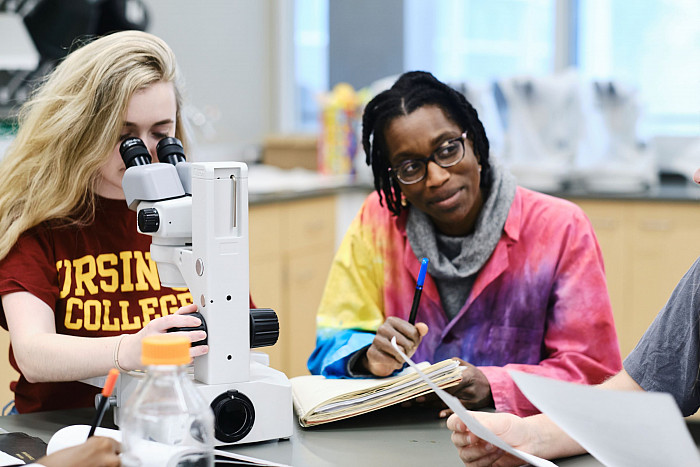Federal Funding Opens to Pathway to Research in Favero Lab
The Alcohol Institute and the National Institutes of Health (NIH) has awarded a $349,738 grant to study the link between alcohol and altered dopaminergic wiring [which may have implications for substance use disorders].
The link between drinking during pregnancy and physical, cognitive, and behavioral birth defects is well-documented. But there are significant gaps in our understanding about the mechanisms underlying alcohol’s effects on the brain’s wiring during its development.
It’s a research area that Professor of Biology Carlita Favero has spent the last decade investigating.
“There is something that alcohol is doing in utero to alter how the brain is forming,” said Favero, an expert in cortical development.
She’s about to take her work in an entirely new—and mostly unchartered—direction. Favero has been awarded a $349,738 grant from the NIH to study alcohol’s impact on dopaminergic axons, which in the brain are responsible for things like attention, impulse control, and executive function.
“Prenatal alcohol exposure predisposes the brain to become vulnerable to substance use disorders, not just for alcohol, but all kinds of substances,” Favero said. “So, it’s something I would love to study more. Because these axons are in the same region where I have been studying thalamus cortex connections, I thought it would be interesting to look at them and see if some of the same pressures are on those axons.”
Dopaminergic axons are guided by microglial cells, which are the resident immune cells of the brain.
“It’s marrying all these things—all of these interests,” she said. “I get to work with glial cells, I get to work with these dopaminergic projections that are important for substance use disorders. It’s different, and I’m excited to apply what I know about cortical development to dopaminergic function.”
“I love the embryo brain,” she continued. “I think it’s beautiful. Learning about why the brain is wired in such a way to cause substance use disorders is a clinical phenomenon—why does that happen and how can we ameliorate that so it’s not the case?”
Favero’s excitement is palpable. She first began to dip her toe into these new research waters in 2015 when she wrote what she called “a 100 percent theoretical grant.”
“I had no data, and I knew I wasn’t going to get funded, but I wrote what I thought was going on. I drew it out and I got some comments where people told me it was important,” she said. Now she’s encouraged that since that time, a couple more labs have done embryonic studies with microglia.
“The field itself is young-ish. It’s still growing, and I think researchers now are starting to go further and further back [in looking at brain development], which is an advantage for me,” she said.
And now, she has the funding to pilot her own research which will also include student support in her lab. Favero said her persistence in trying to get this work funded is a good message to send to students. She keeps a piece of tape on her laptop where she has written her scores for federally funded research proposals that were rejected.
“Every day I look at that and remember to keep trying,” she said. “I was discouraged each time, but I just think, ‘Keep trying.’ Just being able to do this work to see it be valued in the field is huge. I’m very proud of that.”
